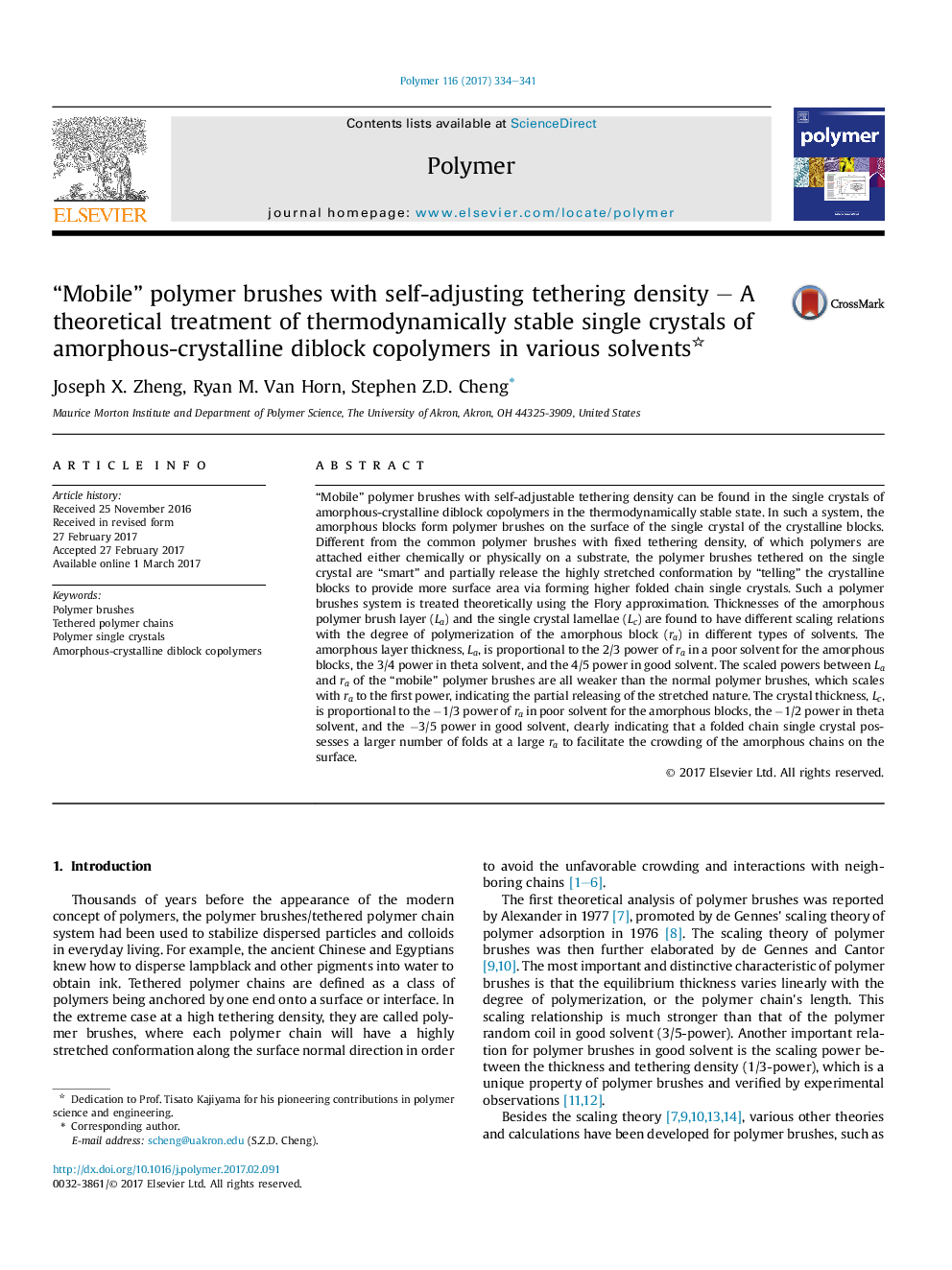| کد مقاله | کد نشریه | سال انتشار | مقاله انگلیسی | نسخه تمام متن |
|---|---|---|---|---|
| 5178145 | 1502490 | 2017 | 8 صفحه PDF | دانلود رایگان |

- A model of “mobile” polymer brushes tethered on a polymer single crystal has been proposed based on the Flory treatment.
- The scaling relation between polymer chain dimension (L) and the polymer chain length (r) has been shown to lie in between the polymer solution and polymer brushes cases: L â¼Â r2/3 for a poor solvent, L â¼Â r3/4 for a theta solvent and L â¼Â r4/5 for a good solvent.
- This model is able to describe many nano-phase separated interfaces in polymers.
“Mobile” polymer brushes with self-adjustable tethering density can be found in the single crystals of amorphous-crystalline diblock copolymers in the thermodynamically stable state. In such a system, the amorphous blocks form polymer brushes on the surface of the single crystal of the crystalline blocks. Different from the common polymer brushes with fixed tethering density, of which polymers are attached either chemically or physically on a substrate, the polymer brushes tethered on the single crystal are “smart” and partially release the highly stretched conformation by “telling” the crystalline blocks to provide more surface area via forming higher folded chain single crystals. Such a polymer brushes system is treated theoretically using the Flory approximation. Thicknesses of the amorphous polymer brush layer (La) and the single crystal lamellae (Lc) are found to have different scaling relations with the degree of polymerization of the amorphous block (ra) in different types of solvents. The amorphous layer thickness, La, is proportional to the 2/3 power of ra in a poor solvent for the amorphous blocks, the 3/4 power in theta solvent, and the 4/5 power in good solvent. The scaled powers between La and ra of the “mobile” polymer brushes are all weaker than the normal polymer brushes, which scales with ra to the first power, indicating the partial releasing of the stretched nature. The crystal thickness, Lc, is proportional to the â1/3 power of ra in poor solvent for the amorphous blocks, the â1/2 power in theta solvent, and the â3/5 power in good solvent, clearly indicating that a folded chain single crystal possesses a larger number of folds at a large ra to facilitate the crowding of the amorphous chains on the surface.
Graphic abstract279
Journal: Polymer - Volume 116, 5 May 2017, Pages 334-341